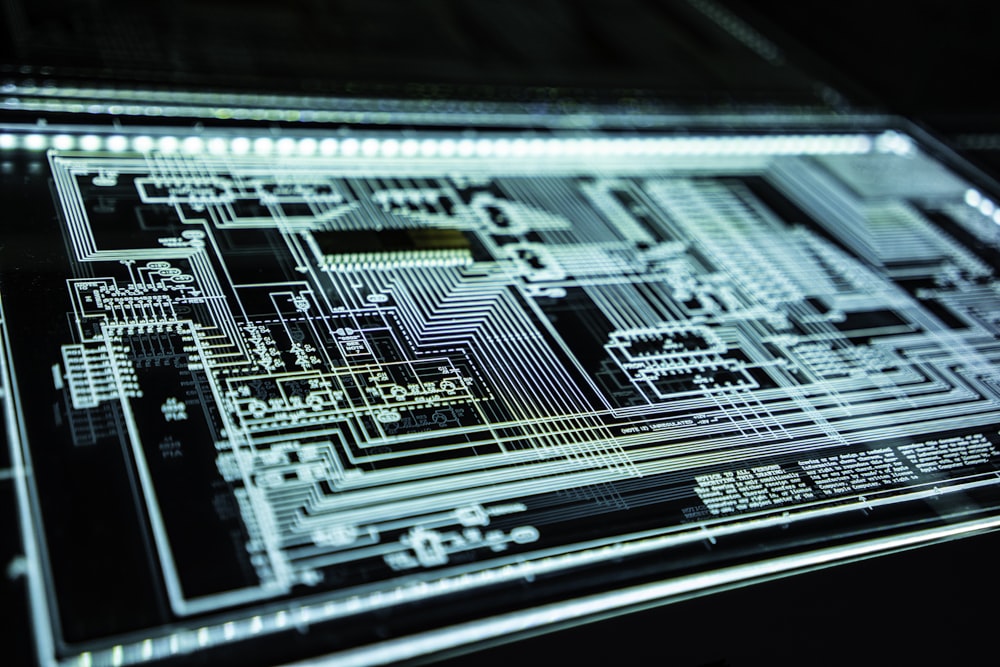Modeling Planarian Regeneration
A Primer for Reverse-Engineering the Worm
How a humble flatworm is teaching scientists to rebuild any broken body
Imagine if a papercut could heal in seconds, a severed finger could grow back in weeks, and a split head could simply rewire itself. For us, this is the stuff of superhero comics. But for the planarian flatworm, it's just a regular Tuesday.
These tiny, cross-eyed creatures are nature's ultimate regeneration champions, and scientists are on a mission to decipher their biological blueprint. By modeling their incredible abilities, we aren't just studying worms; we are reverse-engineering the fundamental software of life, with the ultimate goal of applying its code to human medicine.
The Astonishing Power of the Planarian
Planarians are simple worms found in freshwater streams and ponds. But their simplicity is deceptive. Slice one into a dozen pieces, and in a few weeks, you'll have a dozen complete, fully functional new worms. This raises a profound biological question: How?
The answer lies in a powerful and mysterious population of adult stem cells called neoblasts. These are the master cells, the ultimate repair kit. They are pluripotent, meaning they can become any cell type the worm needs—skin, neuron, muscle, or eye.

Figure 1: Planarian flatworms have remarkable regenerative capabilities due to their neoblast stem cells.
When a planarian is injured, neoblasts swarm to the site, proliferate, and differentiate to rebuild the missing part with perfect anatomical precision. But it's not just a chaotic free-for-all. The process is exquisitely controlled.
This is where the concept of a morphogenetic gradient comes in. Think of it as a biological Google Maps. Cells throughout the worm's body constantly communicate their position using signaling molecules like Wnt and BMP.
After amputation, the neoblasts at the wound site check this molecular GPS to determine what's missing and rebuild exactly that—a head at the anterior wound, a tail at the posterior one.
A Deep Dive: The Experiment That Proved the Rule
While the role of neoblasts was suspected for decades, a landmark experiment in 2011 provided the definitive, smoking-gun proof . The study, led by Dr. Peter Reddien's lab at MIT, didn't just observe regeneration; it systematically dismantled the system to see what made it tick.
Methodology: Hunting for the True Stem Cell
The goal was clear: prove that a single, specific type of neoblast is responsible for all regeneration and long-term tissue maintenance. Here's how they did it, step-by-step:
Identification
First, they needed to find a unique molecular marker for the most potent neoblasts. They identified a gene called piwi-1, which is active only in stem cells.
Isolation
Using a technique called Fluorescence-Activated Cell Sorting (FACS), they separated out all the cells that expressed piwi-1.
Irradiation
Planarians are highly vulnerable to radiation, which destroys dividing cells. The researchers irradiated a group of worms, completely wiping out their neoblast population. As expected, these worms lost the ability to regenerate and eventually died.
The Rescue
This was the crucial step. They took the isolated piwi-1+ cells from a healthy donor worm and transplanted them into a single, lethally irradiated recipient.
Observation
They then monitored the irradiated host. Would the transplanted cells be able to not only survive but also multiply, spread throughout the entire body, and repopulate all tissues? To track them, the donor cells were labeled with a fluorescent protein, making them glow.
Results and Analysis: The Single-Cell Superpower
The results were stunning. The irradiated, dying worms that received the transplant were completely rescued. The donor cells proliferated, migrated throughout the entire body of the host, and differentiated into every single tissue type—gut, neurons, skin, and more. The host worm was effectively rebuilt from the donated cells.
Even more remarkably, when these rescued worms were amputated, they could regenerate perfectly, proving the donor cells were fully functional. This experiment provided incontrovertible evidence that a single class of cells (the piwi-1+ neoblasts) contains the true pluripotent stem cells responsible for the worm's entire regenerative ability.
Table 1: Key Results from the Neoblast Transplantation Experiment
| Experimental Group | Procedure | Regeneration Ability? | Long-Term Survival? | Key Conclusion |
|---|---|---|---|---|
| Control (Healthy) | No irradiation | Yes | Yes | Baseline normal function |
| Irradiated Only | Exposed to radiation, no transplant | No | No (died) | Proof that radiation kills regenerative capacity |
| Transplant Recipient | Irradiated + received piwi-1+ cells | Yes | Yes | Donor cells fully rescued the worm, restoring all functions |
The Digital Worm: From Biology to Computer Model
Understanding the cells is one thing; understanding the instructions they follow is another. This is where computational modeling comes in. Scientists are creating virtual planarians to test their theories .
These models simulate:
- Cell Behavior: How neoblasts divide, differentiate, and move
- Signaling Gradients: How concentration gradients of Wnt, BMP, and other molecules define position
- Anatomy: The final, correct shape of the worm
By running thousands of computer simulations, researchers can test which rules of cell communication and behavior lead to a perfectly regenerated worm versus a chaotic blob or a terrible deformity.

Figure 2: Computational models help scientists understand the complex signaling pathways in planarian regeneration.
Table 2: Success Rates in Regenerating Specific Structures Under Different Conditions
| Structure to Regenerate | Normal Conditions | With Wnt Signaling Inhibited | With BMP Signaling Inhibited |
|---|---|---|---|
| Head (from tail fragment) | 100% | 100% | 0% (forms second tail) |
| Tail (from head fragment) | 100% | 0% (forms second head) | 100% |
| Central Nervous System | 100% | 50% (disorganized) | 30% (disorganized) |
Regeneration Process Visualization
Timeline of planarian regeneration process over two weeks
The Scientist's Toolkit: Key Research Reagents
Decoding the worm requires a sophisticated set of biological tools. Here are some of the most critical reagents and their functions:
Table 3: Essential Toolkit for Planarian Reverse-Engineering
| Research Reagent | Function in Experimentation |
|---|---|
| RNA Interference (RNAi) | A revolutionary technique used to "silence" or turn off specific genes. By injecting double-stranded RNA for a gene (e.g., a Wnt pathway gene), scientists can block its function and observe what goes wrong during regeneration (e.g., a worm growing two heads). |
| Whole-Mount In Situ Hybridization (WISH) | A staining method that makes RNA molecules visible. It allows researchers to see exactly where and when an important gene is turned on in the whole, intact worm, creating a map of genetic activity. |
| Fluorescent Cell Lineage Tracing | A way to label individual neoblasts or their daughter cells with a fluorescent tag and track them over time through multiple cell divisions to see what tissues they become. |
| Small Molecule Inhibitors | Chemical drugs that can be added to the worm's water to precisely inhibit specific proteins (e.g., the MAPK protein in the head-regeneration pathway). Allows for temporary and reversible control. |
Genetic Tools
Advanced techniques like CRISPR are now being used to edit planarian genes and study their function.
Imaging Technologies
High-resolution microscopy allows scientists to watch the regeneration process in real time.
Computational Models
Sophisticated algorithms simulate the complex processes of tissue regeneration.
The Future is Regenerative
The work on planarians is more than a biological curiosity. It's a foundational project in systems biology—an attempt to understand the incredible complexity of life not just part by part, but as an integrated whole.
By building accurate models of how planarians regenerate, we are learning the universal language of tissue organization and repair.
The long-term implications are profound. While we won't be regenerating limbs by injecting planarian cells, the core principles we learn—how stem cells are managed, how positional information is encoded, and how growth is controlled—are directly applicable to human biology.
Potential Medical Applications
- Spinal cord injury repair
- Treatment of degenerative diseases
- Improved wound healing
- Organ regeneration technologies
- Cancer research (understanding uncontrolled growth)
Research Challenges Ahead
- Scaling findings from simple to complex organisms
- Understanding the complete signaling network
- Ethical considerations in stem cell research
- Translating basic research to clinical applications
- Funding long-term fundamental research
The humble planarian, in all its simple glory, is providing the instructions for a medical revolution.
© 2023 Regenerative Biology Journal. This content is for educational purposes only.